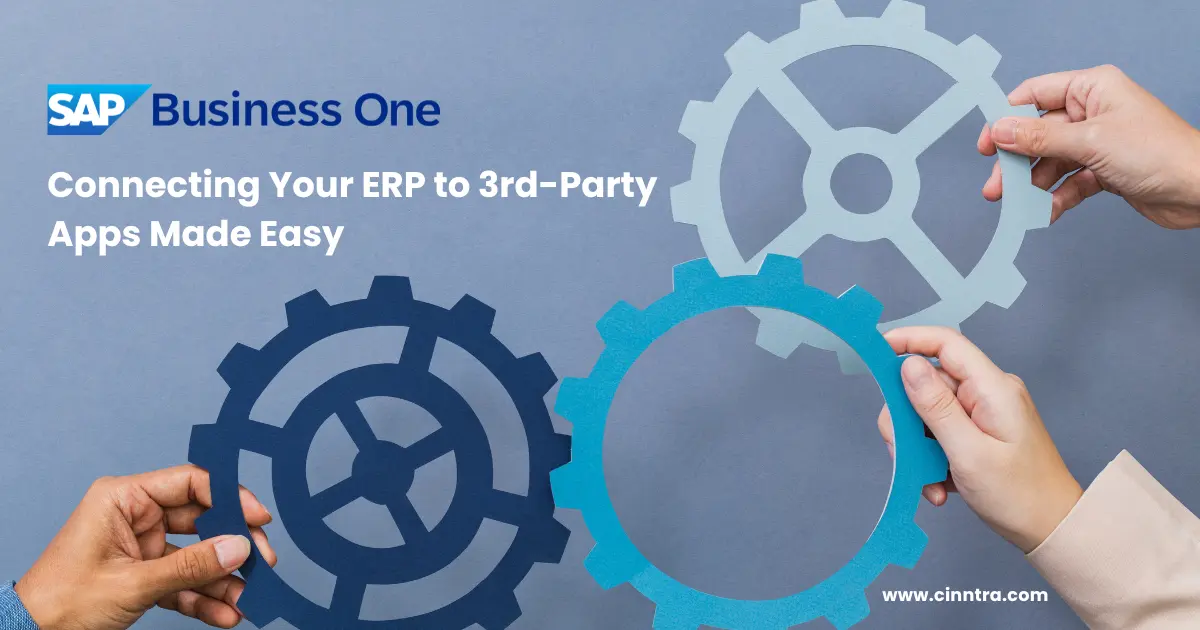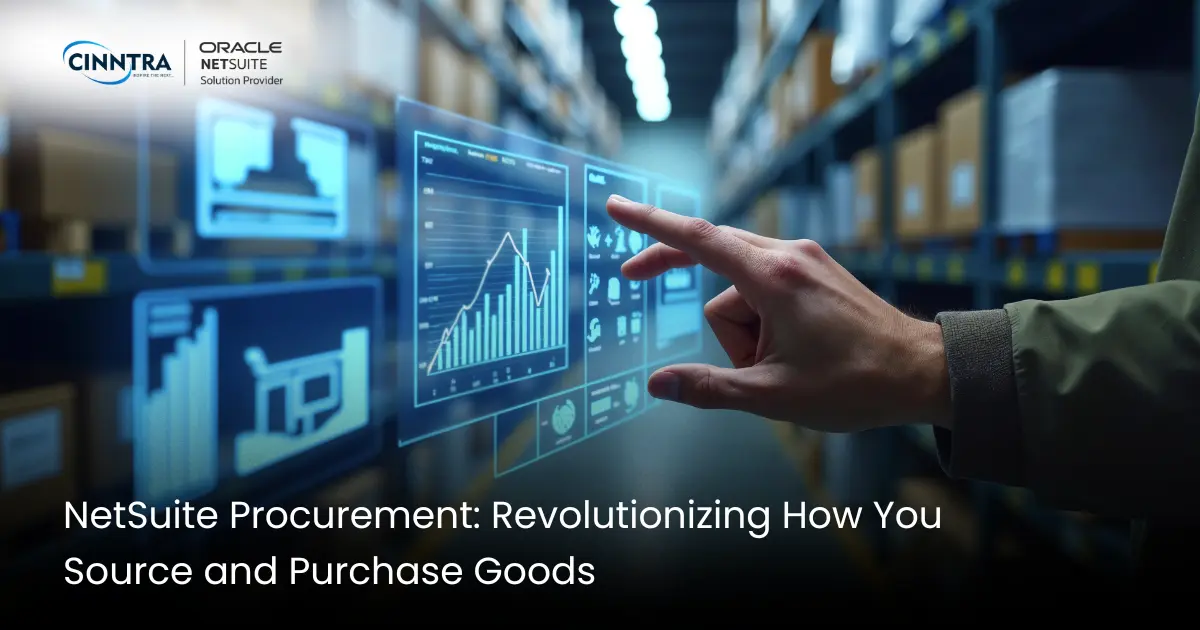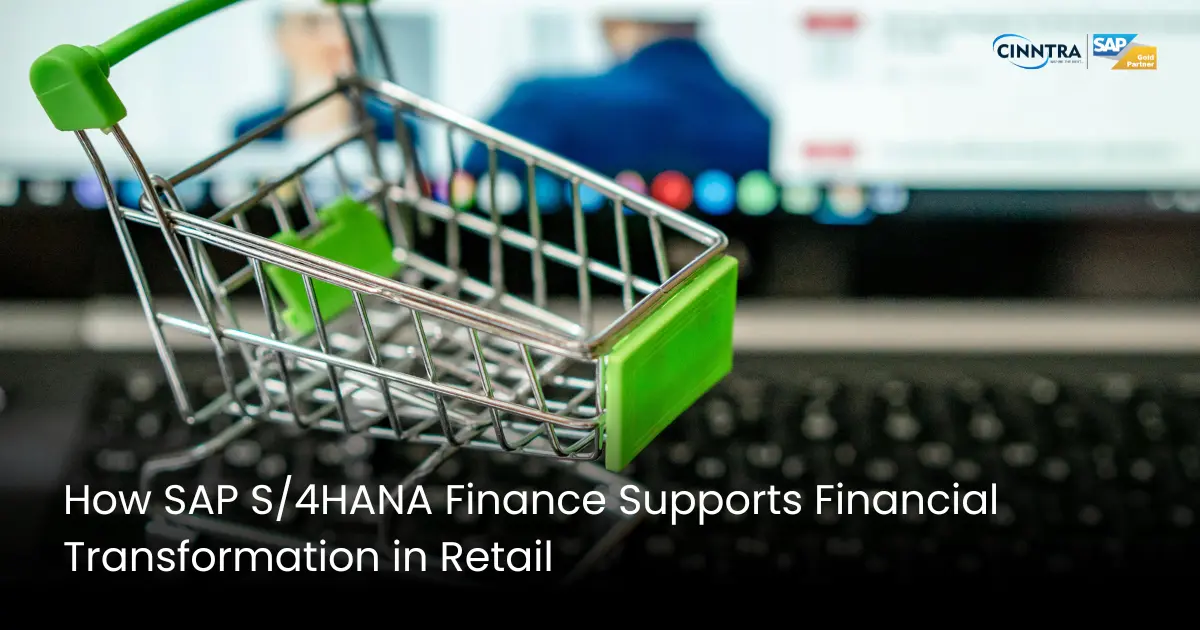SAP Business One Integration: Connecting Your ERP to 3rd-Party Apps Made Easy

Today's organizations are leveraging technology to be more efficient and accurate to collect real-time information to optimize their processes. But with multiple platforms that are not adequately integrated together, information silos can arise almost immediately.
This is where the importance of SAP Business One integration can greatly benefits your company. When integration is done well, it has the potential to automate processes, lower the burden of manual labor, and support decision-making.
Most small to mid-sized businesses utilize an ERP solution to manage the core business process components (i.e., accounting, inventory, purchasing, etc.).
However, the issue of discrepancies quickly arises once the company adds additional external standalone systems for logistics, sales, or marketing as plugins to their ERP.
Companies operating in this disjointed fashion can ultimately lose out on opportunities to grow. Integration is a unified bridge and provides a cohesive link to align all operations.
Understanding SAP Business One ERP and Its Integration Value
SAP Business One ERP is a cloud-based, convenient, and scalable system for a growing company. It allows a company to manage finance, sales, CRM, purchasing, and supply chain from one umbrella or dashboard.
An ERP is only as good as the other outside systems you are using such as e-commerce platforms, CRMs, or payment systems. Integrating third-party applications into your ERP can improve and enhance the existing accuracy and efficiency of your operations.
This Creates clarity and enhances accountability around the actions of team members. Any reporting you conduct will also reduce errors when utilized with a more cohesive system and enhance business agility.
Why Is SAP Business One Integration with External Apps Crucial?
The tools available to present-day companies are plentiful. Teams use different systems for email systems, customer support, logistics, and many more.
If these systems don't work together, they are often separate systems. SAP Business One integration puts your ERP in the middle of everything to unify the tools at your disposal.
When your apps communicate together via the internet in real-time, a business can automate complex tasks and minimize repetitive tasks, while providing leadership with a better look at operations as a whole.
Finance teams can reconcile data faster. Sales teams can view customer history in seconds. Simply put, agility is critical in fast-paced businesses where decision-making must be fast and data-driven.
Most Common Apps Integrated with SAP Business One ERP
By linking the right tools with your SAP Business One ERP, you will optimize every aspect of your business. Some popular integrations include eCommerce platforms like Shopify, CRM tools like HubSpot, and tools like PayPal or FedEx.
All eCommerce integrations allow businesses to manage their inventory and orders in one place. CRM integrations allow sales teams to view their customers in one picture. Shipping tools allow companies to give tracking updates in real time. All integrations also suppress the need for 1, 2, or 3 different entries because your ERP can be the verified single source of truth.
SAP Business One Shopify Integration: Automating eCommerce Workflows
If you have an online store, SAP Business One Shopify integration can drastically improve your eCommerce flows. It allows your online store and your back-office system to seamlessly work together, improving the experience for both your staff and your customers.
Whenever a customer places an order, it appears instantly in the ERP. Inventory is up to date in real-time, helping to eliminate stock-outs, as well as overselling. Customer information, invoices, and shipping details are automatically synced as well.
This not only saves time during the order processing phase but ensures high levels of customer satisfaction, even in a competitive eCommerce environment.
Integration Methods: APIs, Middleware, and Prebuilt Connectors
Integration methods differ, and it depends on your business objectives and technical capabilities. Integration to SAP Business One can be through APIs, middleware platforms, or through third-party connectors. APIs allow for direct, custom control.
Middleware platforms such as Dell Boomi or Zapier allow for scalable integration to take place without a tremendous amount of coding. SAP-certified connectors can deliver benefits quickly for your common use cases.
Before deploying, businesses need to consider security, components, budget, and timelines to arrive at a method that works for them. Each method has advantages, depending on how operationally complex your business is.
Custom vs. Pre-Built Integration Solutions: What Works Best?
Integration projects vary in size, scope, and need. For niche systems or old business models, custom integration solutions allow for more flexibility than pre-built solutions.
However, if you're integrating with more broadly used platforms and are constrained by cost, then pre-built integration makes the most sense. This is especially true if you're operating as a small development team deploying SAP Business One ERP capabilities in a small business, or startup, environment.
Pre-built options allow for less implementation time and therefore may be easier to maintain. The downside to prebuilt is, they may not work for every use case your business is implementing.
Custom-built integrations will require a larger investment. However, if you're enabling custom workflows, you will have some flexibility for your organization's future growth.
Key Considerations Before Implementing SAP Business One Integration
Before starting an integration project, it is essential to participate in thoughtful planning. An organization must analyze existing data flow, the compatibility of systems or platforms, and scalability.
If you do not carefully evaluate or give consideration to any one of these, the organization could experience downtime, unforeseen expenses, or even business shutdowns. There are also compliance and security concerns that should be considered for SAP Business One integration.
It is helpful to have key business departments involved at the beginning of the project to understand what success looks like.
For example, how will changes or updates in a third-party application or partner like Shopify impact your ERP's performance? It is best to engage experts who know both systems recognize the interdependencies and can blend both systems according to your organizational priorities.
How SAP Business One Shopify Integration Helps Ecommerce Brands Succeed?
When you enable SAP Business One Shopify integration, eCommerce businesses benefit from increased productivity and a better perspective. Imagine updating your product catalog in one system, and it automatically reflects changes in real time on your eCommerce site's public website.
Every order, payment, and customer information flows directly into your ERP system with zero manual effort to incorporate that data into your organization's systems.
This method achieves improved accuracy in the order fulfillment process, and better shipping timelines, while managing returns, updating inventory balances, and assessing sales trends all done on the fly. Your teams can engage with customers collaboratively and spend less time on systems and supporting back-of-house activities.
Get Started with SAP Business One Integration for Your Business
If your organization already uses SAP Business One ERP, now is the time to connect it with other platforms your teams rely on. Whether you're running a retail store, manufacturing unit, or service firm, integration is the smart move to gain a competitive edge.
To boost efficiency in eCommerce, consider the power of SAP Business One Shopify integration as your next step toward digital transformation.
Technology works best when it works together. Integrating your ERP with critical business tools helps your operations become more responsive, efficient, and scalable. Leap and ensure your systems are built to grow with you.





0 Comments